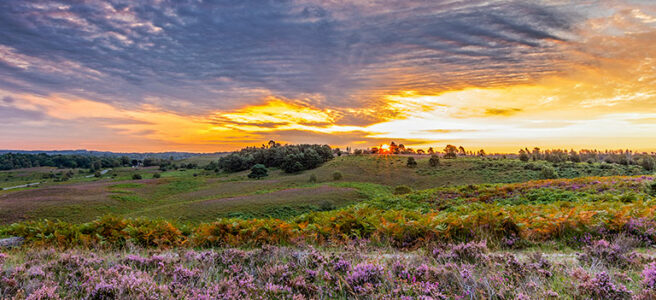A quite different New Forest experience awaits in the wilder Northern Commons of the New Forest National Park.
The tundra is more sprawling and slightly hillier than the south with a tapestry of walking tracks and trails which have changed little over hundreds of years and cover huge expanses of blooming heather plains flecked with bursts of yellow gorse. Rivers, streams, and ponds form a patchwork of waterways with bogs, mire and grasslands fringed by woods and enclosures. Its vast, beautiful ruggedness provides a home and playground for a long roll call of animals and birds – so bring your binoculars and a camera with you.
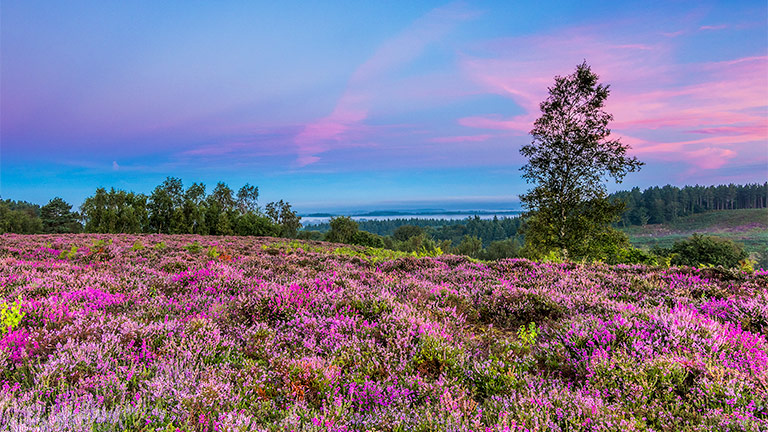
The impressive variety of habitat is a real treat and rare to find anywhere else in the UK, or in fact, Europe. You’ll also find enclosures of tree plantations and woodland which were initially created by the New Forest’s founder, William the Conqueror, back in 1079 for his royal hunts. Today they are in existence to protect young trees from deer and other woodland creatures from eating the saplings.
The wildlife-rich woods, sprawling heather plains and countryside provide the perfect place to see the abundant wildlife the New Forest National Park is known for. Badgers, foxes, rabbits, squirrels and even pine martens and polecats have been spotted here. An exciting roll call of birds of prey frequent the open acres in plentiful numbers. Look to the skies for buzzards, hen harriers, hobbys and kestrels as well as the super-rare honey buzzards and goshawks.
Closer to ground are the familiar knocks, soprano melodies and sweet, excited trills of stonechats, woodpeckers, skylarks, and nightjars which are in abundance in the New Forest. Birdsong is a year-round soundtrack while exploring this inspirational wilderness. Pack a picnic and head out to dine among copious numbers of butterflies and wildflowers which in spring and summer cloak the hills and sun-dappled woods in a profusion of colour. Orchids, wild gladiolus, cotton grass, sundews, foxgloves, and fragrant tree blossom and honeysuckle ramble through the hedgerow.

The ponds and streams of the northern commons are also filled with life. Tadpoles, frogs, and newts wiggle in the ripples while brightly coloured dragonflies and their smaller cousins damselflies zip and swoop through the air in artistic displays. The famous feral New Forest ponies, donkeys and cattle belonging to New Forest Commoners often make an appearance for refreshment and, come autumn, are joined by free-roaming domestic pigs who are set free to forage on beech mast nuts and acorns which make the ponies and cattle ill when eaten in large numbers. In this part of the forest, you’ll often see large herds of fallow deer – the pretty Bambi looking ones, with white spots on their back.
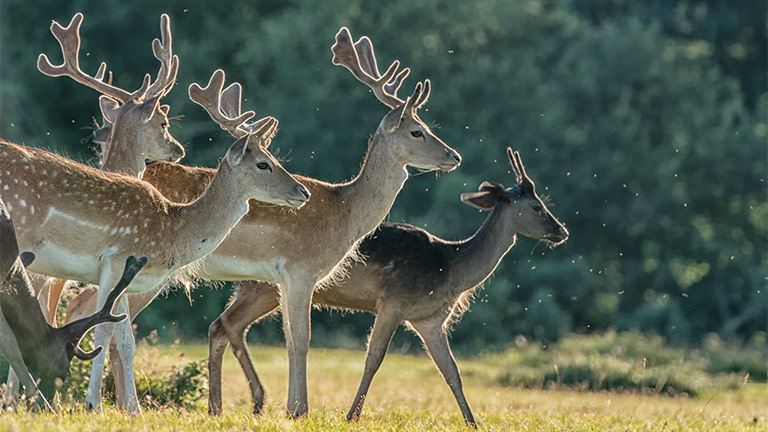
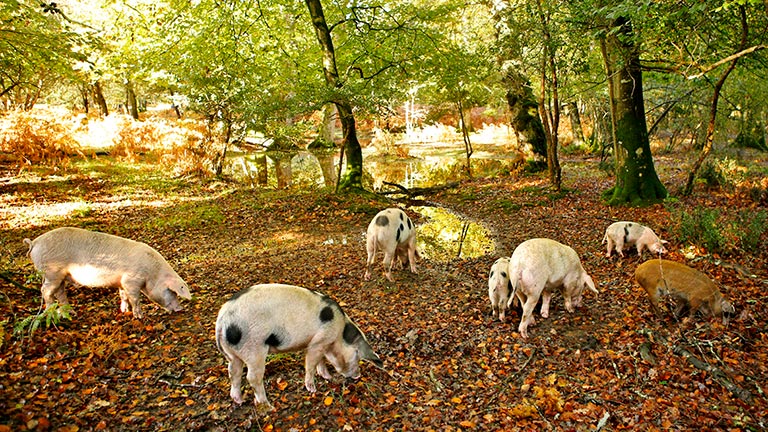
A great view can be found at Hyde Common in Abbots Well car park where a toposcope denotes the landscape. Another magnificent view can be seen from Rockford Common. Scale the large hill for a far-reaching panorama to Ibsley over to Cranborne Chase and on a clear day, right the way over to the ancient Purbecks on the Dorset Coast.
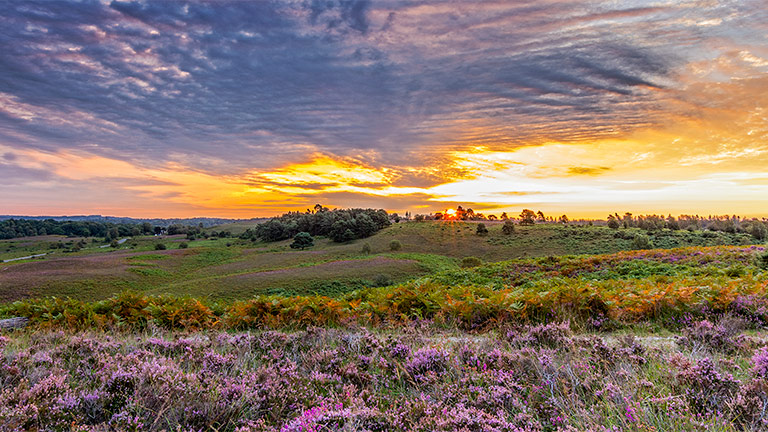
An interesting site to visit is the area that was used during WWII by the RAF is at Ibsley. There have been twelve airfields in the New Forest over the years, nine of which were built for use in the Second World War. RAF Ibsley is just east or the Avon River and had three runways. The Ibsley memorial has maps and viewpoints and can be found just north of Mockbegger Lakes, east of the village on Linwood.
Scenes of the hit 90’s Hollywood blockbuster ‘Robin Hood Prince of Thieves’ was filmed on the northern commons of the New Forest, near the village of Fritham where Kevin Costner and Morgan Freeman charged on horseback across the landscape. If you’re exploring the area around Fritham on a walk, make a stop at The Royal Oak pub in the village for a fantastic meal. Nearby Stagbury Hill, just south of Furzley, is the highest point in the New Forest as well as a Bronze Age burial ground. Follow the walking tracks down to the village of Brook for lunch at either the Green Dragon pub or The Bell Inn.
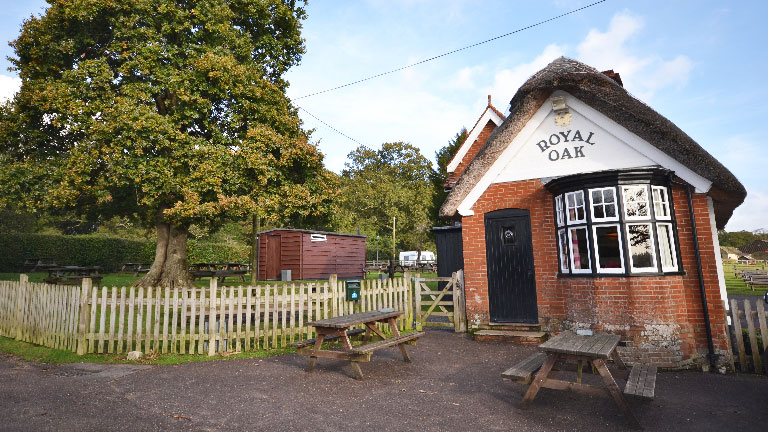
The western fringes of the Northern Commons and New Forest runs the stunningly pretty Hampshire Avon River. It’s known as one of the best coarse and fly fishing rivers in the United Kingdom with massive chubb, barbel, pike and trout. Buy a rod license for the day or week for rod action in a mix swims, shallows runs and riffles where fish grow to terrific size. For non-fishing visitors, an absolute must is a day or so exploring the Avon Valley Path whose route starts at the cathedral city of Salisbury and follows the river all the way to Christchurch. The North Common sections are Salisbury to Downton; Downton to Fordingbridge and Fordingbridge to Ringwood.
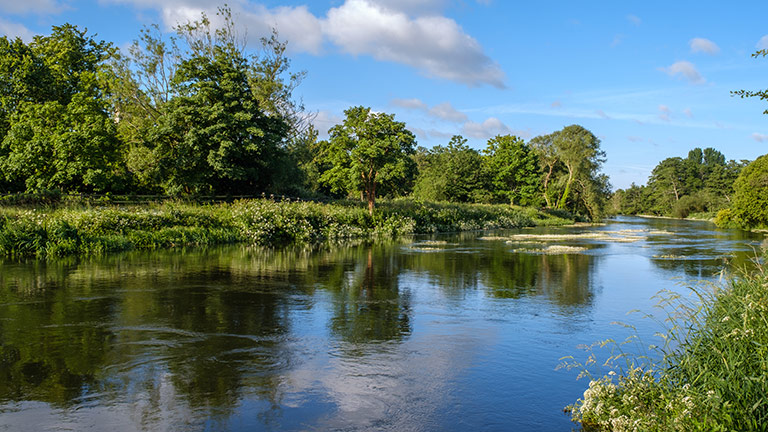
You’ll be rewarded with views of water meadows, wonderful village pubs and historic Inns. The river is teeming with wildlife including swans, ducks, and flashes of blue from kingfishers. Most excitingly are the furry escapades of otters playing in the river – find a spot on the riverbank, settle down and keep very quiet and you may be rewarded with a very special wildlife encounter.

